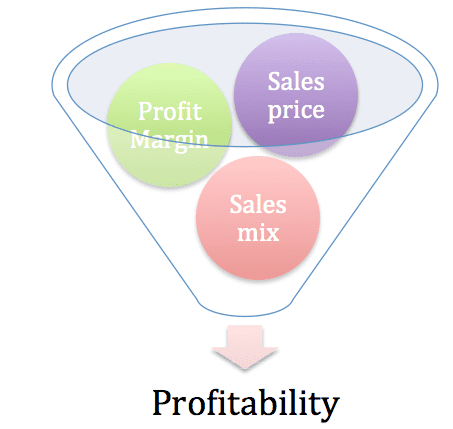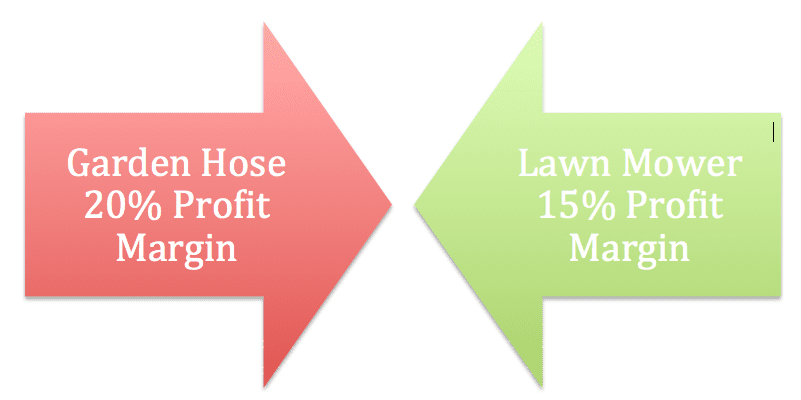What DoorDash Teaches Us About Profit Margin And Sales Mix (Blog post with graphics)
There’s nothing wrong with promoting a loss leader product to get customers in the door.
Your grocery store does it all the time.
Around July 4th, the store advertises rock-bottom prices for charcoal, hot dogs, buns, and other items for your holiday picnic. They also bundle these products into a nice display area in the store.
And that works.
“Oh, that’s right!” you think to yourself. “I need to get stuff for the picnic- and I might as well take my grocery list with me.”
The store makes a profit on the other items on your grocery list.
But if too many products or services are loss leaders, you’ll never make any money.
Investors will start to notice.
What Happened
In this article, the Wall Street Journal explains how investors pushed startup firms to move away from loss leader/ discounts, and toward profitability.
“The proliferation of subsidized products and services from venture-capital-backed startups over the past decade reflected a rush by investors to fund the next behemoth consumer-tech company. The thesis: Create a market leader with loyal customers hooked by attractive deals delivered at the touch of a smartphone app. Once the company got big enough, profits would flow and the subsidies could end.
Startup investors began to re-evaluate that approach. Following a year of dismal performances from companies that were heavily subsidized by venture capital, investors and board members are pressuring companies to figure out a more profitable business model, tech deal makers and startup founders say.”
DoorDash, the meal delivery service, is a good example. When the WSJ article was published, the company operated in 4,000 markets, and had a 37% market share, according to Second Measure.
Another quote from the article:
“DoorDash provides free delivery to a low- single-digit percentage of its orders, the person said, and its restaurant partners cover part or most of the losses from other freebies.
For more great content on accounting, personal finance, and entrepreneurship, join Conference Room for free.
The growth in markets came despite encouragement from some board members to focus on turning a profit from each customer, according to another person familiar with the matter. DoorDash is projected to lose about $450 million this year, before factoring in certain expenses, that person said. ”
So, what’s the solution? Well, it has a lot to do with managing profit margins and sales mix.
Managing Profitability
I defined profit margin in this QuickBooks article:
“Profit margin is defined as (net income / sales), and this ratio explains the profit earned on each dollar of sales. This metric is a great tool to compare the profitability of products with different sales prices, and you should start your pricing analysis with this metric.”
I explain sales mix in this article:
“Each product may have a different profit margin, and a business can change the sales mix of products to generate a higher overall profit. Many firms don’t analyze sales mix, and these companies are missing the opportunity to increase profits.
Assume that the hardware store earns $4 on a garden hose priced at $20, and $45 on a $300 lawn mower. The profit margin on the garden hose is ($4 / $20), or 20 percent, while the lawn mower profit margin is only 15 percent ($45 / $300). The lawn mower generates far more revenue, but less profit per dollar of sales. The hardware store can increase the company-wide profit margin by selling more garden hoses and fewer lawn mowers.”
DoorDash can certainly promote using some free deliveries. They can take a loss on some restaurant agreements, if adding a particular restaurant will increase total sales. If DoorDash starts to offer pizza from your favorite restaurant, you may decide to start using the food delivery service.
The total profit on all of your sales, however, must generate a company-wide profit.
The Lesson
Use profit margin and sales mix to balance sales promotions and profitability.
Go to Accounting Accidentally for 530+ blog posts and 450+ You Tube videos on accounting and finance:
Good luck!
Ken Boyd
Author: Cost Accounting for Dummies, Accounting All-In-One for Dummies, The CPA Exam for Dummies and 1,001 Accounting Questions for Dummies
(email) ken@stltest.net
(website and blog) https://www.accountingaccidentally.com/



